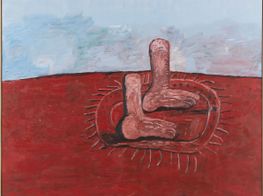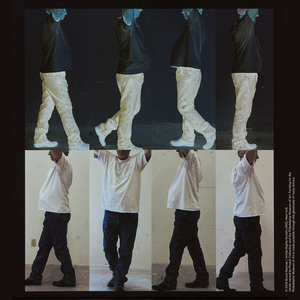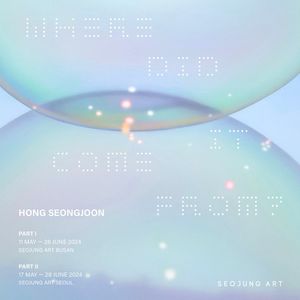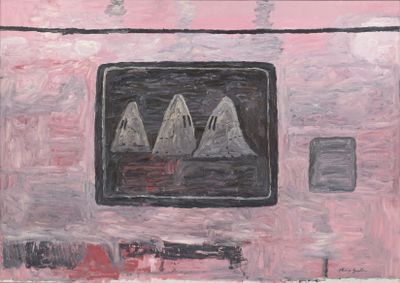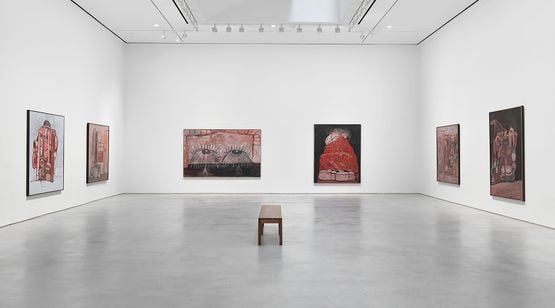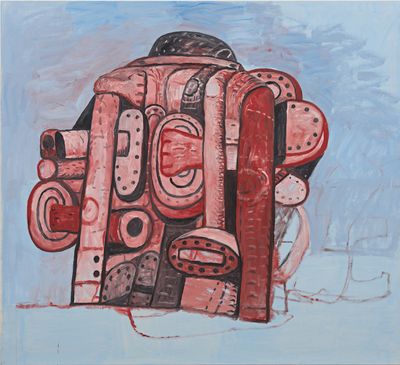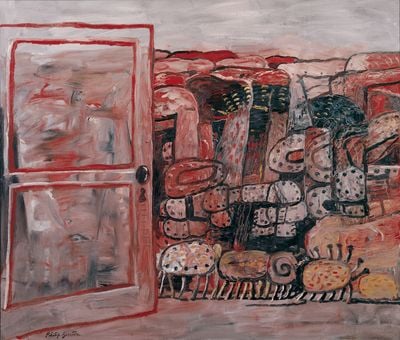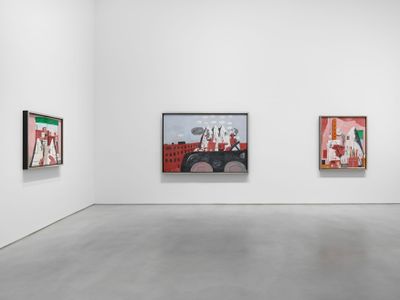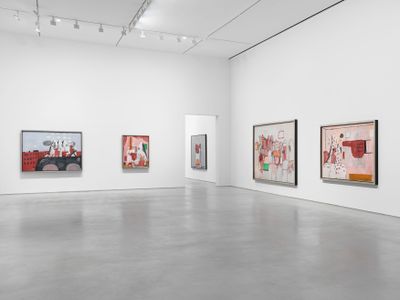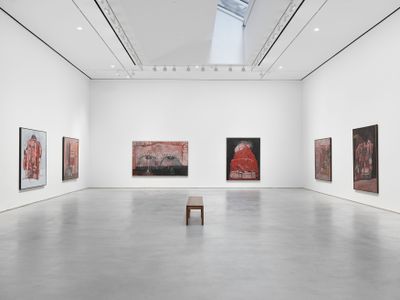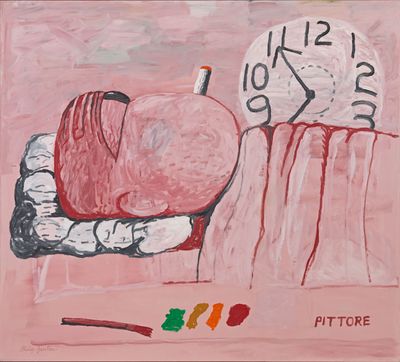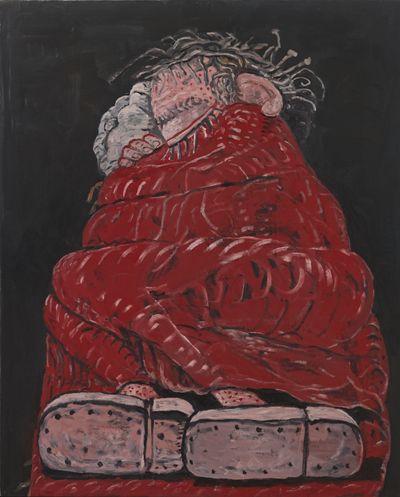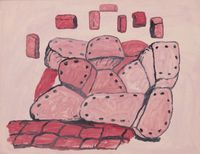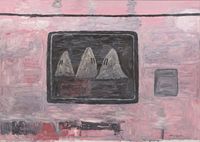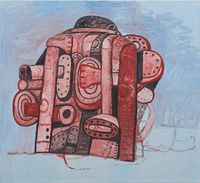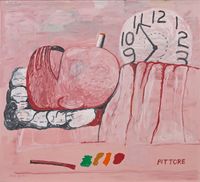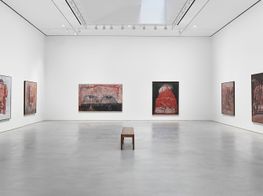Philip Guston’s Most Controversial Decade of Work
More than 30 years since his death, Philip Guston remains as relevant, or perhaps even more so, than ever.

Exhibition view: Philip Guston, Philip Guston, 1969 – 1979, Hauser & Wirth, 22nd Street, New York (9 September–30 October 2021). © The Estate of Philip Guston. Courtesy the Estate and Hauser & Wirth. Photo: Genevieve Hanson.
The celebrated painter's legacy took centre stage last year, when scores of artists, critics, and curators signed a letter in protest of four museums' decision to postpone a landmark retrospective to 2024.
In the wake of the Black Lives Matter protests that shook the United States and wider global community to its core, the National Gallery of Art, Tate Modern, and the Museum of Fine Arts in Boston and Houston decided to shy away from presenting the exhibition, cowered by the prospect of public misinterpretation with regards to Guston's renditions of hooded figures resembling Ku Klux Klan members.
The exhibition's postponement promptly drew ire, as many rightfully decried the apparent lack of faith in viewers' ability to glean meaning from challenging art—and, more problematically, the assumption that the fervent call for racial justice would subside within a few years' time.
In this age of cancel culture, many venues have dodged behind safe, even performative choices to pander to public demands, and it has taken special courage to present art that tackles bigotry in a nuanced way.
Philip Guston, 1969 – 1979, presented by Hauser & Wirth in New York City (9 September–30 October 2021), rises to the challenge of presenting the artist's last and most controversial decade of work, which broke away from abstraction in defiance of the norms that dictated mid-century American art.
Triggered in large by seismic events such as the Vietnam War and the 1968 assassinations of Martin Luther King Jr. and Robert Kennedy, Guston eschewed the concept of visual purity and returned to figuration, turning his attention towards personal traumas as well as the evils that he witnessed. It was at this juncture that his now infamous, cartoonish Klansman characters became recurring fixtures.
Though there is certainly no shortage of political content within modern and contemporary art, the artist's exceptional talent—residing not only in his masterful wielding of terse, frenzied brushstrokes but, more importantly, in his subtle approach towards reflecting on the dark underbelly of human society—distinguishes it from the rest.
Hauser & Wirth gives space for his practice to speak for itself, introducing the paintings with little more than a few short sentences that provide basic context. Six works, each depicting Klansmen in mundane moments, confront viewers with their continued relevance in the first gallery.
Although they were created roughly 50 years ago, the canvases feel woefully current, given that white supremacy has permeated the right wing with renewed tenacity in post-Trump America.
In Guston's paintings, Klansmen, appearing as triangular white mounds with non-emotive eyes and disproportionately large hands, are performing acts such as driving around and clutching cigarettes, existing in a strange universe that feels disturbingly similar to our own.
Among the most striking works here is The Studio (1969), wherein one figure paints a similarly hooded character—instilling the canvas with a self-awareness that feels particularly haunting given the nonsensical cruelty of racism.
...these late works capture his masterful ability to tap into the lasting imprints that hatred and tragedy leave on the human psyche.
Another interpretation could be that Guston, as the picture's creator, is reflecting on his own culpability in perpetuating the injustices that so many of us falsely believe to be far removed from our own thoughts and actions.
In looking at these works, it is difficult not to conjure the philosopher Hannah Arendt's equally controversial treatise on the banality of evil, which argued that evil can often be executed out of not amorality but rather thoughtlessness in people's day-to-day lives.
The exhibition transitions to a second room bearing 12 other paintings, each created during the 1970s. These works move onto other subject matters pertaining to loss and violence—tracing back to dark personal chapters such as his family's exodus from Odessa in Ukraine to escape Nazi persecution during World War II, as well as the loss of his father and brother as a child.
Guston's trademark hue of cadmium red carries throughout the room, charging it with a powerful sense of turmoil and unease. Produced during his twilight years, many of these paintings depict disembodied limbs piled atop one another in apocalyptic scenes that are both shrouded in mystery and distilled by the artist's off-kilter style.
Three canvases—Pittore (1973), Sleeping (1977), and Tears (1977)—feature characters in various states of rest, however they exude anything but tranquility; rather, they appear as portraits of a man struggling to find peace in a dissonant world.
Pittore and Tears each centre on a figure whose eyes pierce upwards with pronounced sorrow and distress, while Sleeping features a white-haired man—presumably the artist himself—clenching a red blanket while being engulfed in black.
Though they are just as outwardly ambiguous as so many others within Guston's oeuvre, these late works capture his masterful ability to tap into the lasting imprints that hatred and tragedy leave on the human psyche.
Though achingly stunning in its own right, Hauser & Wirth's presentation nonetheless covers just a small sliver of the artist's practice, leaving the viewer eager for a more comprehensive presentation—hopefully to be found in the forthcoming retrospective, now debuting at the National Gallery of Art in 2022. —[O]

